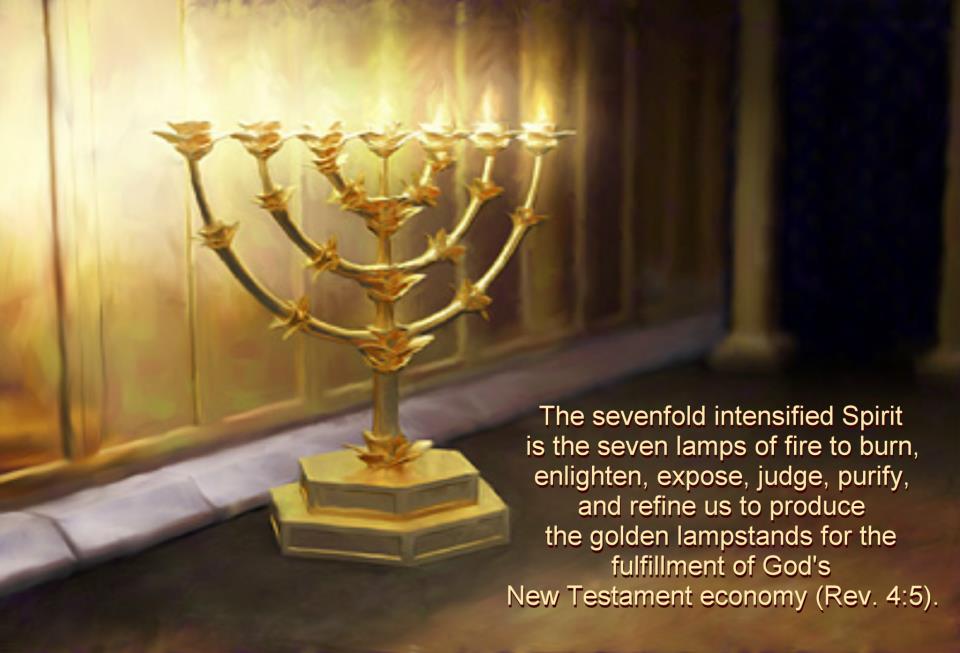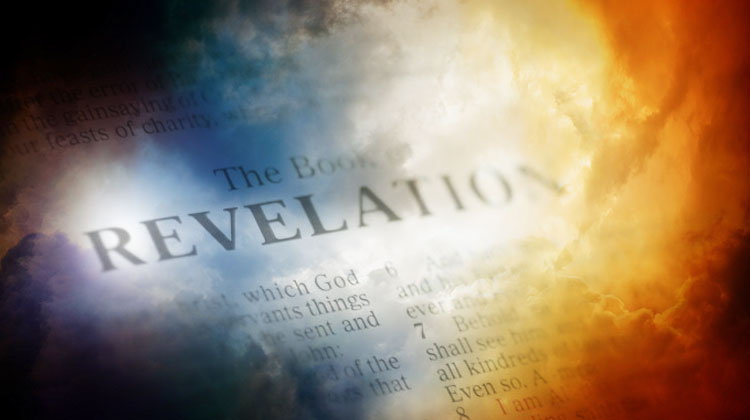Is this the end?

Is this the end? Our world is in turmoil. Civic unrest is occurring across the world. We are still facing a pandemic that is frightening as much for what we don’t know about it as what we do. The world economy is shattered. Visions of apocalypse dance in our heads.

Even non-Christians can hardly describe COVID-19 without invoking the notion of judgment. Sarah, Duchess of York, for example, is convinced that Nature itself is judging us. She recently tweeted that
“Mother Nature has sent us to our rooms . . . like the spoilt children we are. She gave us time and she gave us warnings. She was so patient with us. She gave us fire and floods, she tried to warn us but in the end she took back control.”
It has been hard for people to process what is going on around them in any other way. Catastrophe is in the air.
“In Revelation, God is opening up (revealing!) his wonderful plan for the ages.”
- Is God judging the world?
- Are all the troubles the world is currently facing punishments from above?
The simple answer is yes . . . and no. Charles Spurgeon once quipped that “only fools and madmen are positive in their interpretation of the Apocalypse” (The Sword and the Trowel, October 1867). Perhaps you will bear with us in a little foolishness with the book of Revelation as our guide.

Apocalypse Now
Revelation is an apocalypse. In fact, “apocalypse” (apocalypsis) is the very first word in the Greek text of the letter. “Apocalypse” means an “opening up” or “revelation,” hence the English title to the letter. The whole letter is a revelation of God’s plan for his creation, although many read it in the exact opposite way as if it were a book of mysteries meant to be concealed from us. For this reason, many believers find Revelation intimidating and even overwhelming. They fear they will never be able to make sense of it all.
But God wants you to understand this book. In Revelation, God is opening up (revealing!) his wonderful plan for the ages. He promises that He will bless those who read and hear what is written in the letter (Revelation 1:3). You can’t be blessed by what you can’t understand. And do you think God intends that for his people? Surely not.

What Is Revelation?
To understand Revelation, we must know what it is. And God has not left us in the dark. Revelation is a word from God the Father, given to God the Son, “to show to his servants the things that must soon take place” (Revelation 1:1) in this world. How does Jesus Christ reveal these truths? He sends “his angel to his servant John,” and John bears “witness to the word of God and to the testimony of Jesus Christ, even to all that he saw” (Revelation 1:1–2). The last phrase in verse 2 gives us the key to making sense of everything that follows: God reveals his plan for the ages to John in a series of things that John sees, that is, in a series of visions (the visions are called “signs” throughout Revelation).
“This is God’s judgment on the world in the way that Revelation explains judgments from God.”
How do you make sense of a vision or a sign? Praise God he didn’t leave us to figure this out on our own. In addition to the numerous visions of the Old Testament prophets (many of which are interpreted for us, like Daniel’s four beasts in Daniel 7), the first sign in Revelation is also explained for us.

The seven golden lampstands (Revelation 1:12) that John sees “are the seven churches” (Revelation 1:20) that John writes to in the letter. Signs, then, are just that. They are signs. They are not the thing itself, but images that help us understand something else.

The rest of Revelation is a series of signs shown to John that reveal to God’s people “the things . . . that are and those that are to take place after this” (Revelation 1:19). Through these signs, God unveils the true state of this world, both at the moment of John’s writing and throughout the remainder of this age as it draws near to its close with the return of Jesus Christ.
Readers of Revelation can easily get off track if they fail to recognize the visionary nature of the letter. The question is not “Is Revelation literally true?” but rather “How is God revealing his truth?” God reveals himself in many ways in the Bible — in-laws, in histories, in songs, in proverbs, in letters, and, as in Revelation, in visions.
When we recognize this vital fact, we will read the letter differently than many people do today. By far, the most common way of reading Revelation is to assume that it is more or less a continuous narrative from Revelation 1:1 to Revelation 22:21. It is to approach Revelation as if we were watching a movie from start to finish.
It is easy to see why someone might read the letter in this way. Once John finishes recording Christ’s word to each of the seven churches (Revelation 2–3), he moves on to a vision of “a door standing open in heaven,” introducing it with the words “after this I looked” (Revelation 4:1).
Some variation of this phrase introduces all of the remaining visions in the letter (see, for example, Revelation 4:1; 5:1; 7:1, 9; 15:5; 18:1; 19:1, 11, 17; 20:1, 4, 11; 21:1, 9–10; 22:1). Do these time indicators mean that each vision unfolds sequentially, much as the plot of a movie would unfold?
Not at all. Instead, John is shown a series of visions one after the other. First he is shown a door open into heaven (Revelation 4), and then he is shown a scroll in the hand of “him who was seated on the throne” (Revelation 5:7), and he watches as the seven seals on the scroll are opened (Revelation 7). “After this” John see four angels “holding back the four winds of the earth” (Revelation 7:1), and on and on it goes throughout the letter.
It is not that the visions show us a series of things that (necessarily) happen in time one after the other, but that the visions are shown to John one after the other. When the events recorded in each vision may occur in the history of this age has to be determined within each vision itself. For example, Revelation 12:5 is about the birth (and life, death, resurrection, and ascension) of Jesus Christ, even though this event obviously occurred before the situation of the seven churches described in Revelation 2–3.
Rather than thinking of Revelation as a single unfolding narrative (like a movie or novel), we would be much better off thinking of it like a series of paintings in an art gallery. You take one painting in, and then you move on to the next until you have had a look at every painting in the whole gallery (or until your wife has become exasperated with you for reading every single detailed description of each of the paintings . . . but I wouldn’t know about that). In the same way, John is shown one vision, and “after that” shown another, until the Lord has shown him every vision to be passed on to Christ’s church.
To figure out how each vision maps on to time in this world require us to take the visions one by one. Some visions take place outside of time (the heavenly throne room of chapter 4), some cover the whole of this age (the trials of Christ and his church in Revelation 12), some refer to the time immediately leading up to the final judgment (Revelation 20:11–15), and so on. Each painting (as it were) reveals something absolutely vital for God’s people to know about the plan of God in this age.

What Is Revelation About?
What is that plan? To understand Revelation, we must know what it is, but we must also know what it is about. Here too God has not left us to flounder in darkness. Revelation is about the things “that are and those that are to take place after this” (Revelation 1:19).
And John is told to “write what you see in a book and send it to the seven churches” (Revelation 1:11). But what is this letter to the church about? What are the things “that are and those that are to take place after this”?
Although we obviously can’t answer this question exhaustively, God has given us a key in Revelation 2 and 3 that enables us to make sense of everything that follows: each of the words from Christ to the seven churches foreshadows the central themes of the whole letter.
- The word to Ephesus mentions the patience necessary (Revelation 2:2–3; see Revelation 13:10; 14:12) to arrive at the day when God’s people can eat of the tree of life and live forever (Revelation 2:7; see Revelation 22:2).
- Smyrna is told of how to avoid “the second death” of hell (Revelation 2:11; see Revelation 20:6, 14; 21:8).
- Pergamum’s exhortation gives us a glimpse of the mission of the church, which is to bear faithful testimony to Christ (Revelation 2:13; see Revelation 11:3, 7), fighting a spiritual war with Christ’s sharp sword (Revelation 2:12, 16; see Revelation 19:15).
- To Thyatira is held out the authority that the saints will exercise in Christ over the nations for all eternity (Revelation 2:26–27; see Revelation 12:5; 19:15), an authority paradoxically exercised in the midst of suffering (Revelation 1:6; 5:10), even as it will be consummated in victory on the last day (Revelation 20:4, 6; 22:5).
- To Sardis is given a warning that Christ’s return in judgment will be like a thief breaking into the house of one unprepared (Revelation 3:3; see Revelation 16:15).
- Furthermore, it is said of those who conquer (that is, persevere in faith) that they “will be clothed thus in white garments” (Revelation 3:5; see Revelation 4:4; 6:11; 7:9, 13–14; 19:14). The book of life recurs many times in the letter as well (Revelation 3:5; see Revelation 13:8; 17:8), being the only solid basis for hope on the last day (Revelation 20:12, 15; 21:27).
- Philadelphia is reminded that Christ is coming soon (Revelation 3:11; see Revelation 1:5; 22:7, 12, 20) and that the New Jerusalem awaits all the saints (Revelation 3:12; see Revelation 21:22–22:5), a place where they will be pillars in the temple of God (Revelation 3:12; see Revelation 7:15; 11:1–2, 19; 14:15, 17; 16:1, 17; 21:22).
Finally, to Laodicea, the saints are told that they will one day sit with Christ on his throne (Revelation 3:21), which throughout the Bible is associated with the ark of the covenant (thus the place of worship). God’s throne appears in Revelation over 35 times, culminating in the worship of God in the new creation (Revelation 22:3) where we will feast with Christ (Revelation 3:20; see Revelation 19:6–10).

Chapters 2–3, in other words, give us the key that opens up the meaning of the whole letter: this age is an age of spiritual battle in which Christ and his people reign and triumph in the midst of suffering. It is an age in which the saints must long patiently for the age to come, sustained by worship at God’s throne. And in the midst of the trials and tribulations of this age, God’s people are given the grace to endure by glorious visions of what awaits them on the other side of their suffering: the marriage supper of the Lamb, eating from the tree of life, not being harmed by hell (the second death), having their names written in the book of life, entering into the majestic and eternally secure New Jerusalem, where the temple presence of God fills all.
Making Sense of Judgment
So, where does judgment fit into all of this? Does Revelation have anything to tell us about tribulations the world is currently experiencing? Yes, but perhaps not in the way we might expect. When many people ask the question “Is this disaster God’s judgment on the world?”
What they really are asking is whether a specific disaster can be said to be a specific punishment from God for specific sins of a specific group of people. Despite how common it is for some to speak about judgment this way, the Bible gives us no grounds after the close of the canon of Scripture for being able to tie specific disasters closely to specific sins of specific peoples. This would require a new revelation from the Lord that he has not given us.
“These trials come from the hand of God, who in the midst of them keeps his children near to himself.”
But there is another common way of talking about the tribulations the world faces that (perhaps in reaction to this first way of speaking) swings the pendulum in the exact opposite direction. For a variety of reasons, many have adopted the lingo (if not the sentiments) of modern materialism. In this way of thinking, hurricanes, earthquakes, famines, pandemics, and so on are nothing more than “natural disasters,” essentially random events that have little or nothing to do with God. That is not what we see in Revelation either.

The Seven Scrolls and Trumpets
In Revelation 5:1, we read about “a scroll written within and on the back, sealed with seven seals.” An angel asks, “Who is worthy to open the scroll and break its seals?” (Revelation 5:2).
No creature in all the earth is worthy, so John begins to weep (Revelation 5:3–4). Why is this so devasting to him? Clearly, what is written on the scroll is of the utmost importance. John’s sadness lasts only a moment before he is told to cease his weeping because “the Lion of the tribe of Judah, the Root of David, has conquered so that he can open the scroll and its seven seals” (Revelation 5:5).

What is written on the scroll? We learn the answer as each of the seven seals is opened (in Revelation 6:1–17 and 8:1–5).
- The first four have to do with judgments on the earth: persecution (Revelation 6:1–2), war (Revelation 6:3–4), economic disaster (Revelation 6:5–6), and death by sword, famine, and disease (Revelation 6:7–8).
The fifth seal is an assurance to those who have suffered for Christ that they will be vindicated (Revelation 6:9–11), while the sixth seal portends the final judgment (Revelation 6:12–17), which arrives with the opening of the seventh seal (Revelation 8:1–5).
When do these judgments begin? We have every reason to believe that they are included within the things “that are to take place after this” of Revelation 1:19. This means that the tribulations of the first four seals, rather than occurring only immediately before Christ returns, are in fact the kinds of tribulations that the original audience of Revelation will soon face.
In fact, John opened his letter by reminding his readers that he is a partner with them “in the tribulation and the kingdom and the patient endurance that are in Jesus” (Revelation 1:9). Tribulation and hardship are to be expected throughout this age. The churches of Revelation 2–3 are already seen to be experiencing many such difficulties.
“These events are not random. They are not ‘natural disasters.’ They are acts of God.”
Readers of Revelation quickly notice how important the number seven is in the letter (seven is the biblical number of completion). Just as there are seven seals on the scroll, so we encounter seven trumpets in Revelation 8:6–9:21 and 11:15–19. A scroll is a biblical image of revelation; a trumpet is one of judgment (think Jericho). What kind of judgments do we come across with the seven trumpets?
The first four trumpets cover the entirety of the created order: earth (Revelation 8:6–7), oceans (Revelation 8:8–9), freshwater (Revelation 8:10–11), and the sky (Revelation 8:12–13). With each trumpet judgment, only a third of the designated realm is affected. These are not, in other words, pictures of total judgment, the kind we will see when Christ returns. These are limited judgments that will fall upon the earth throughout this age.
The fifth through seventh trumpets is called “woes” (Revelation 8:13) because they all are focused on the effects of judgment upon humanity (who will cry out, “Woe!” under the force of the judgments). The fifth trumpet judgment (Revelation 9:1–12) is one that afflicts only unbelievers (Revelation 9:4) and is therefore probably one of inner turmoil and despair (see Revelation 9:6).
The sixth trumpet unleashes angels who kill “a third of mankind” (Revelation 9:15, 18), showing us again that these judgments are not comprehensive and final. The seventh trumpet brings with it the arrival of the kingdom of God in its fullness: “the kingdom of the world has become the kingdom of our Lord and of his Christ, and he shall reign forever and ever” (Revelation 11:15). After this comes the final judgment (Revelation 11:19).

The Seven Bowls
In Revelation 16, we encounter a final sevenfold cycle, “the seven bowls of the wrath of God” (Revelation 16:1). The seven bowls are clearly patterned after the seven trumpets. The first four bowls exactly match the realms of the created order in the first four trumpets: earth (Revelation 16:2), oceans (Revelation 16:3), freshwater (Revelation 16:4–7), and sky (Revelation 16:8–9).
The fifth bowl (Revelation 16:10–11), like the fifth trumpet, centres on the anguish of those who do not trust in Jesus. The sixth bowl (Revelation 16:12–16), matching the sixth trumpet, begins at the river Euphrates and is also focused on the destructiveness of war. The seventh bowl (Revelation 16:17–21) brings us to the final judgment.
“God’s people are given the grace to endure by glorious visions of what awaits them on the other side of their suffering.”
Careful readers, once they notice the way that the seven bowls are patterned after the seven trumpets, also will notice striking differences. The similarities and differences reveal equally important things to the reader. The main similarity — that each judgment is in the same creational realm — shows us that the trumpets and seals convey the same basic truth: this world is a world under God’s judgment. The main dissimilarity, however, is equally important: with the seven bowls, we have left the realm of partial and limited judgments from the Lord, and have arrived at the final judgment.
As we saw, the seven trumpets affect only a limited portion of the world and its inhabitants. There is no such restriction when it comes to the seven bowls.
- With the second bowl “every living thing died that was in the sea” (Revelation 16:3).
- The third bowl turns all freshwater rivers and springs into blood (Revelation 16:4).
- When the fourth bowl is poured out, the sun becomes supercharged with scorching heat (Revelation 16:8–9).
- The fifth bowl plunges the whole world into darkness and leads unbelievers into deep anguish and misery, without the limitation seen in the fifth trumpet (Revelation 9:5: “for five months”).
- The sixth bowl, like the sixth trumpet, brings war to the earth, but it does so as it assembles “the kings of the whole world . . . for battle on the great day of God the Almighty” (Revelation 16:14). This is the battle of Armageddon, a battle that will end with the final triumph of Christ over all of his enemies on the last day (Revelation 19:11–21).
Finally, the seventh bowl, very clearly patterned after the seventh trumpet, is described in such a way that it can refer only to the full and final manifestation of the wrath of God: “A loud voice came out of the temple, from the throne, saying, ‘It is done!’” (Revelation 16:17). Babylon, representing all the enemies of God’s people, is made to drink “the cup of the wine of the fury of [God’s] wrath” to the full (Revelation 16:19). When the seventh bowl is poured out, the time of God’s patience is finished.

What About Our Current Troubles?
So, should we say that COVID-19, worldwide civic unrest, and the international economic troubles we are facing today are God’s judgment on the world? As we have seen, we have no grounds for saying yes to this question if we mean that we know that these crises are God’s judgment on one group of people for one specific sin. We simply don’t have access to God’s mind on this. But we have also seen that the answer is most definitely yes, that this is God’s judgment on the world in the way that Revelation explains judgments from God.
Revelation gives us the eyes to see that all of the wars, famines, diseases, hurricanes, earthquakes (and so on) that occur in the time between Christ’s advent and return come directly from the hand of God. The scroll with the plan of God for the ages (which includes many tribulations) is “in the right hand of him who was seated on the throne” (Revelation 5:1).
The trials that come with each of the seven trumpets fall upon the world after an angel takes a censer and fills it “with fire from the altar” and throws it down to the earth (Revelation 8:5). The angels who pour out the seven bowls come out of God’s temple and of course are pouring out God’s wrath (Revelation 16:1). These events are not random. They are not “natural disasters.” They are acts of God (a fact our homeowner's insurance policies dimly still reflect).
This fact has a twofold significance for our world. For those who do not have saving faith in Jesus Christ, these trials are in fact judgments from the Lord, although they are limited during this time of God’s patience (seen particularly in the limited scope of the first five trumpets).
They are a wake-up call to a lost world, and they are a foretaste of the greater and final judgment still to come (that is why the bowls are patterned after the limited trumpet judgments). Apart from the radically transformative power of the Holy Spirit, even Revelation tells us that these limited judgments do not by themselves produce repentance (see Revelation 9:21; 16:9). But by God’s grace, they may very mean the Spirit uses to open the eyes of the lost so that they might come to Christ and be saved.
For the believer, however, we see that even though we too must go through almost all of the exact same trials and tribulations as unbelievers, these sufferings cannot separate us from the love of God in Christ Jesus our Lord. These trials come from the hand of God, who in the midst of them keeps his children near to himself. Without this knowledge, these trials would surely overwhelm us. But in knowing God’s purpose and his power to keep us, we can confidently face them all.
Revelation shows us that God has not abandoned us, but rather that the day of salvation draws nearer and nearer. We know that all of the troubles we must endure are part of the Lord’s perfect and loving plan for us, a plan that brings all of the glory to God (Revelation 4:11). And we know how all of this will end, when we will see Christ face to face and “he will wipe away every tear from [our] eyes, and death shall be no more, neither shall there be mourning, nor crying, nor pain anymore, for the former things have passed away” (Revelation 21:4).
Come, Lord Jesus!
Beginning level: The Returning King: A Guide to the Book of Revelation, by Vern S. Poythress
Intermediate level: Triumph of the Lamb: A Commentary on Revelation by Dennis E. Johnson
Advanced level: The Book of Revelation (New International Greek Testament Commentary) by G.K. Beale
Author Ben C. Dunson

